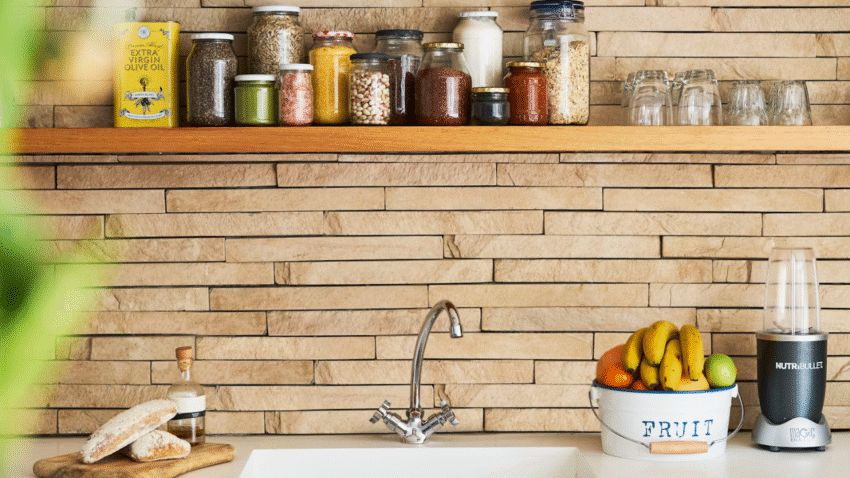Introduction
Is your dishwasher leaving behind food residue or smelling a little funky? It might be time to clean your dishwasher filter. In this guide, you’ll learn how to clean a dishwasher filter step by step so your appliance can run smoothly and your dishes come out sparkling clean. A dirty filter is one of the most common causes of poor dishwasher performance—but with just a few minutes of maintenance, you can restore its efficiency.
Why Cleaning a Dishwasher Filter Matters in the Kitchen
Your dishwasher filter plays a vital role in trapping food particles, grease, and debris during the wash cycle. Over time, this filter can become clogged, leading to poor drainage, lingering odors, and cloudy dishes. If left unchecked, it can even cause your dishwasher to work harder, increasing energy use and shortening the life of the appliance.
Cleaning your dishwasher filter isn’t just about better-looking dishes—it’s about maintaining a hygienic and efficient kitchen. Clean filters mean cleaner water, fewer food particles left on plates, and a smoother cooking workflow without having to rewash items.
Step-by-Step Guide to Cleaning a Dishwasher Filter
1. Gather Your Supplies
Before you begin, collect the following items:
- Dishwashing gloves (optional)
- Soft sponge or brush
- Old toothbrush
- Dish soap
- Microfiber cloth or paper towels
- Small basin or sink of warm water
Tip: Always check your dishwasher’s user manual to locate and understand your specific filter type.
2. Turn Off the Dishwasher
Make sure your dishwasher is completely off before starting. If you recently ran a cycle, let it cool down for 10–15 minutes before working inside it.
Reminder: Safety first—don’t reach into a hot dishwasher or a machine still powered on.
3. Locate the Filter
Open the dishwasher door and remove the bottom rack to access the bottom of the tub. The filter is typically found in the bottom center, under the spray arm or near the back of the tub.
There are usually two components:
- Upper cylindrical filter (mesh screen)
- Lower coarse filter (flat or circular piece underneath)
Kitchen Tip: Some filters twist and lift out; others may require a gentle pull.
4. Remove the Filter
Carefully twist and lift out the cylindrical filter, then pull out the flat coarse filter. Be gentle—filters can be fragile or attached to other components.
Warning: Don’t use excessive force if it doesn’t come out easily. Consult your manual if needed.
5. Rinse and Scrub the Filter
- Rinse both filters under warm running water.
- Apply a few drops of dish soap and use a soft sponge or toothbrush to scrub off any grease or debris.
- Pay special attention to mesh screens and crevices where food particles might hide.
Pro Tip: An old toothbrush is great for loosening dried gunk without damaging the filter.
6. Soak If Necessary
If the filter is especially grimy or clogged:
- Fill a basin or sink with warm, soapy water.
- Soak the filters for 10–15 minutes.
- Scrub again and rinse thoroughly.
Extra Hack: Add a splash of white vinegar for additional deodorizing and grease-cutting power.
7. Wipe the Filter Compartment
While the filters are soaking or drying, clean the area where the filter sits inside the dishwasher.
- Use a damp microfiber cloth or sponge.
- Wipe away food bits, sludge, or buildup inside the filter chamber.
Kitchen Reminder: This step is often skipped—but it helps prevent recontamination when you reinstall the filter.
8. Reinstall the Filter
Once clean and dry, reinstall the coarse filter first, then place the cylindrical filter on top. Twist or snap it back into place securely.
Warning: Make sure the filter is locked in properly—if it’s loose, it may damage the dishwasher or reduce cleaning efficiency.
9. Run an Empty Cycle (Optional)
To freshen the interior:
- Add a cup of white vinegar to a dishwasher-safe container on the top rack.
- Run a hot water cycle with no dishes inside.
This step helps remove any leftover grime and freshens the entire system.
Common Mistakes to Avoid
Mistake 1: Forgetting to Clean the Filter Regularly
Solution: Clean your dishwasher filter at least once a month—or more often if you cook frequently.
Mistake 2: Using Harsh Tools or Cleaners
Solution: Avoid metal brushes or abrasive sponges. These can damage delicate filter mesh or plastic parts.
Mistake 3: Reinstalling the Filter Incorrectly
Solution: Always double-check that the filter is locked into place to prevent loose parts damaging the dishwasher.
Mistake 4: Ignoring the Filter Compartment
Solution: Wipe the filter housing area inside the dishwasher to ensure full sanitation.
Mistake 5: Running the Dishwasher Without a Filter
Solution: Never run your dishwasher with the filter removed. It can lead to clogged spray arms and damage the pump.
Extra Tips & Kitchen Hacks
1. Avoid Pre-Rinsing—But Scrape Off Food
Most modern dishwashers are designed to handle dirty dishes, but large food chunks can clog the filter quickly. Scrape plates, not rinse them.
2. Use Dishwasher Cleaner Monthly
Besides filter cleaning, run a dishwasher cleaner or white vinegar cycle monthly to keep internal parts grease-free and functioning smoothly.
3. Check for Other Blockages
If cleaning the filter doesn’t fix poor cleaning results, inspect the spray arms or drain for clogs. Blockages here can also impact performance.
Product Tip: Try a soft bottle brush to clean spray arm holes.
Conclusion
Cleaning your dishwasher filter might seem like a small task, but it has a big impact on how well your dishwasher performs. A clean filter ensures sparkling dishes, eliminates odors, and helps your appliance last longer. Just a few minutes of monthly maintenance can save you from rewashed dishes and unexpected breakdowns.
So take control of your kitchen hygiene—clean your filter, clear your drain, and let your dishwasher do the rest.
🧽 Bookmark this guide to keep your dishwasher running like new and your dishes perfectly clean!
